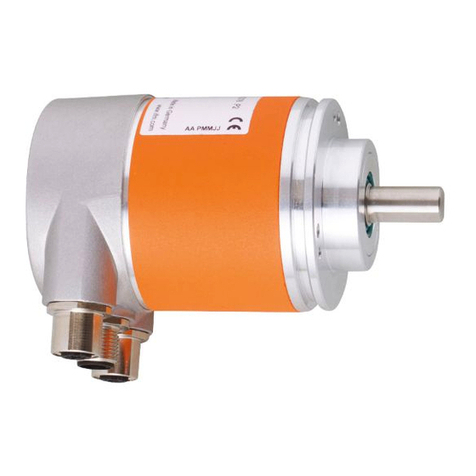
DP2402 Pulse stretcher
2
Contents
1 Preliminary note ............................................................. 4
1.1 Symbols used.......................................................... 4
1.2 Warnings used ......................................................... 4
1.3 Safety symbol on the device............................................... 4
2 Safety instructions............................................................ 5
3 Intended use................................................................ 6
3.1 Temperature derating depending on the altitude . . . . . . . . . . . . . . . . . . . . . . . . . . . . . . . . 7
4 Function ................................................................... 8
4.1 Application as an IO-Link device............................................ 8
4.1.1 General information.................................................. 8
4.1.2 Application ........................................................ 8
4.1.3 IO Device Description (IODD).......................................... 8
4.2 Function diagrams....................................................... 8
4.2.1 Input configuration: pulse-controlled . . . . . . . . . . . . . . . . . . . . . . . . . . . . . . . . . . . . . 8
4.2.2 Input configuration: edge-controlled . . . . . . . . . . . . . . . . . . . . . . . . . . . . . . . . . . . . . 9
5 Installation.................................................................. 10
6 Electrical connection.......................................................... 11
6.1 Mounting the connector................................................... 12
6.2 Removing the connector.................................................. 12
6.3 Cable length........................................................... 12
7 Operating and display elements................................................. 13
7.1 Push rings (pushbuttons) ................................................. 13
7.2 LEDs................................................................. 13
7.3 Indication ............................................................. 14
8 Menu...................................................................... 15
8.1 General............................................................... 15
8.2 Menu structure ......................................................... 15
8.3 Parameters of the main menu.............................................. 15
8.3.1 OUt1 ─ output OUT1................................................. 15
8.3.2 OUt2 ─ output OUT2................................................. 16
8.3.3 EF ─ extended functions.............................................. 16
8.4 Parameters for OUT1.................................................... 16
8.4.1 ou1 ─ output configuration ............................................ 16
8.4.2 dIn1 ─ input configuration............................................. 16
8.4.3 dS1 ─ switch-on delay ............................................... 16
8.4.4 dr1 ─ switch-off delay................................................ 16
8.4.5 h.t1 ─ hold time..................................................... 16
8.5 Parameters for OUT2.................................................... 16
8.5.1 ou2 ─ output configuration ............................................ 16
8.5.2 dIn2 ─ input configuration............................................. 17
8.5.3 dS2 ─ switch-on delay ............................................... 17
8.5.4 dr2 ─ switch-off delay................................................ 17
8.5.5 h.t2 ─ hold time..................................................... 17
8.6 Parameters of the extended functions (EF) . . . . . . . . . . . . . . . . . . . . . . . . . . . . . . . . . . . . 17
8.6.1 rES ─ restore factory setting........................................... 17
8.7 Parameters adjustable via IO-Link .......................................... 17
8.7.1 FLASH_ON – activate flashing of the display . . . . . . . . . . . . . . . . . . . . . . . . . . . . . . 17
8.7.2 FLASH_OFF – deactivate flashing of the display . . . . . . . . . . . . . . . . . . . . . . . . . . . 18
8.7.3 internal_temperature – operating temperature microcontroller . . . . . . . . . . . . . . . . . 18
8.7.4 operation_hours – operating hours . . . . . . . . . . . . . . . . . . . . . . . . . . . . . . . . . . . . . . 18
8.7.5 Application-specific tag............................................... 18
8.7.6 Location tag ....................................................... 18
8.7.7 Function tag ....................................................... 18
9 Parameter setting............................................................ 19
9.1 Parameter setting in general............................................... 19
9.1.1 Example [ou2] - output configuration for OUT2 . . . . . . . . . . . . . . . . . . . . . . . . . . . . . 19




























